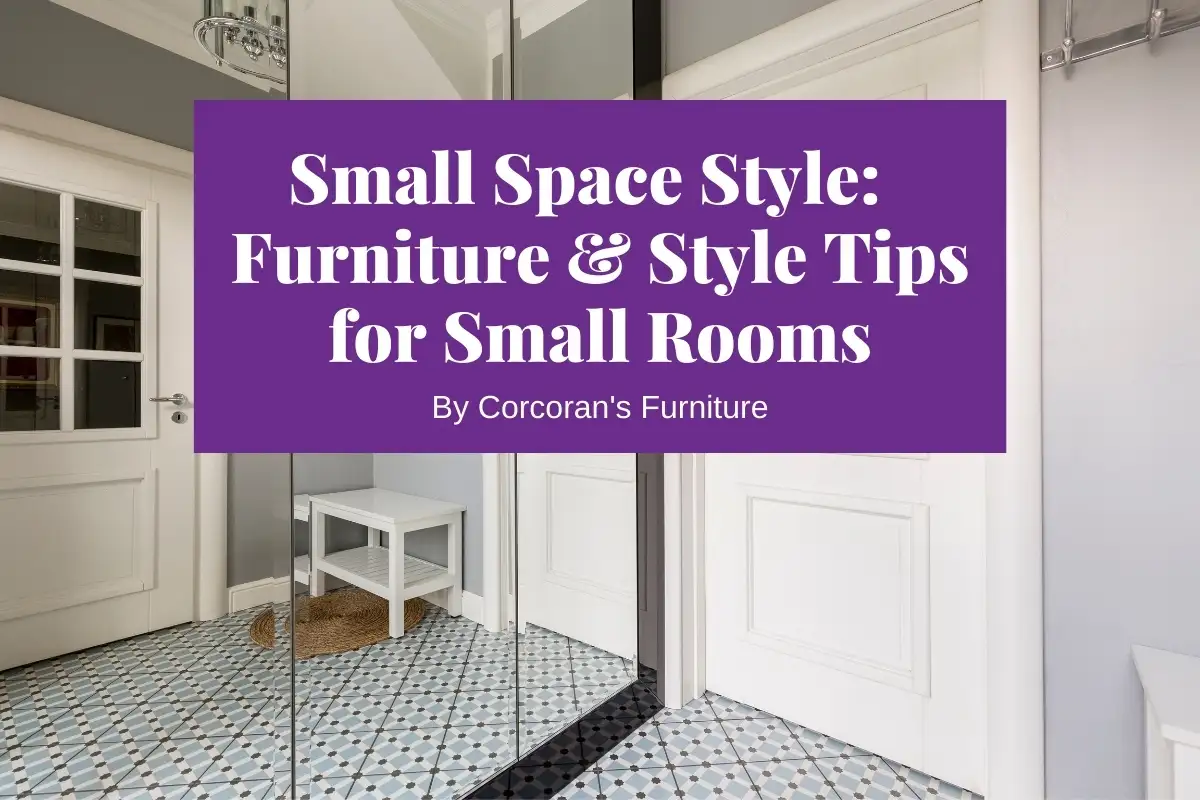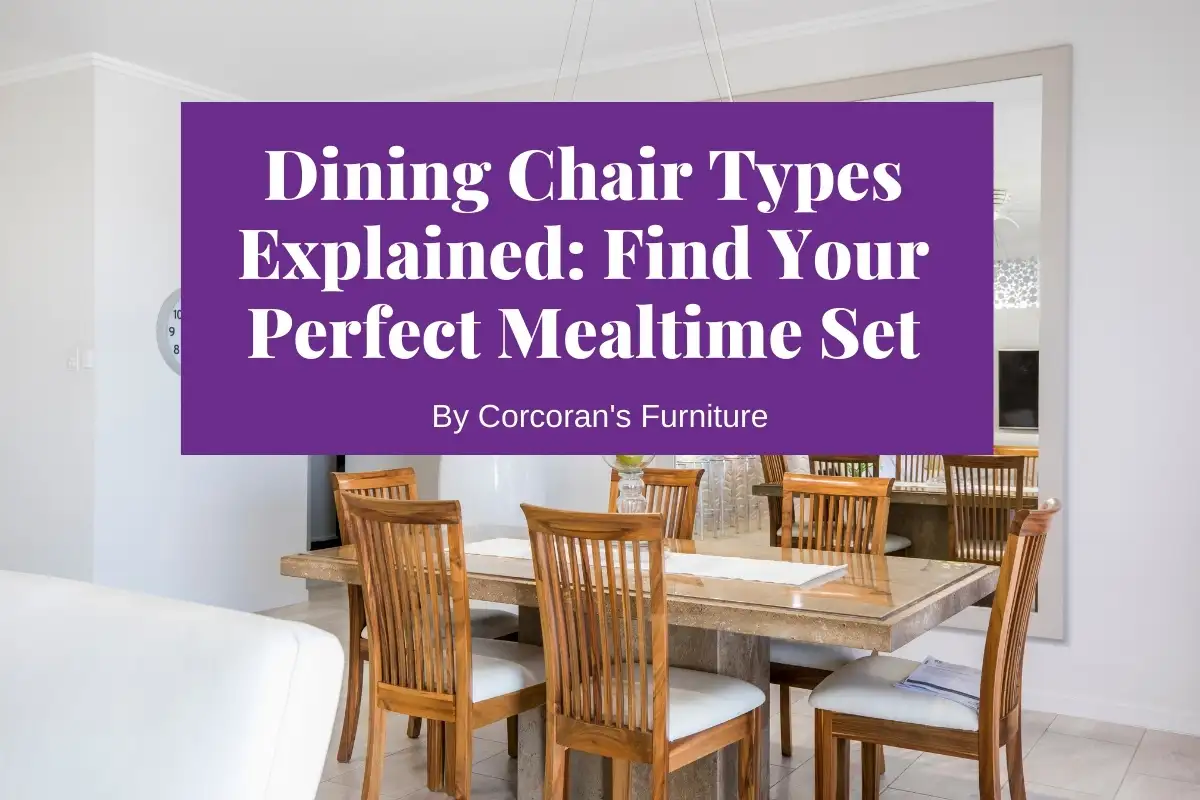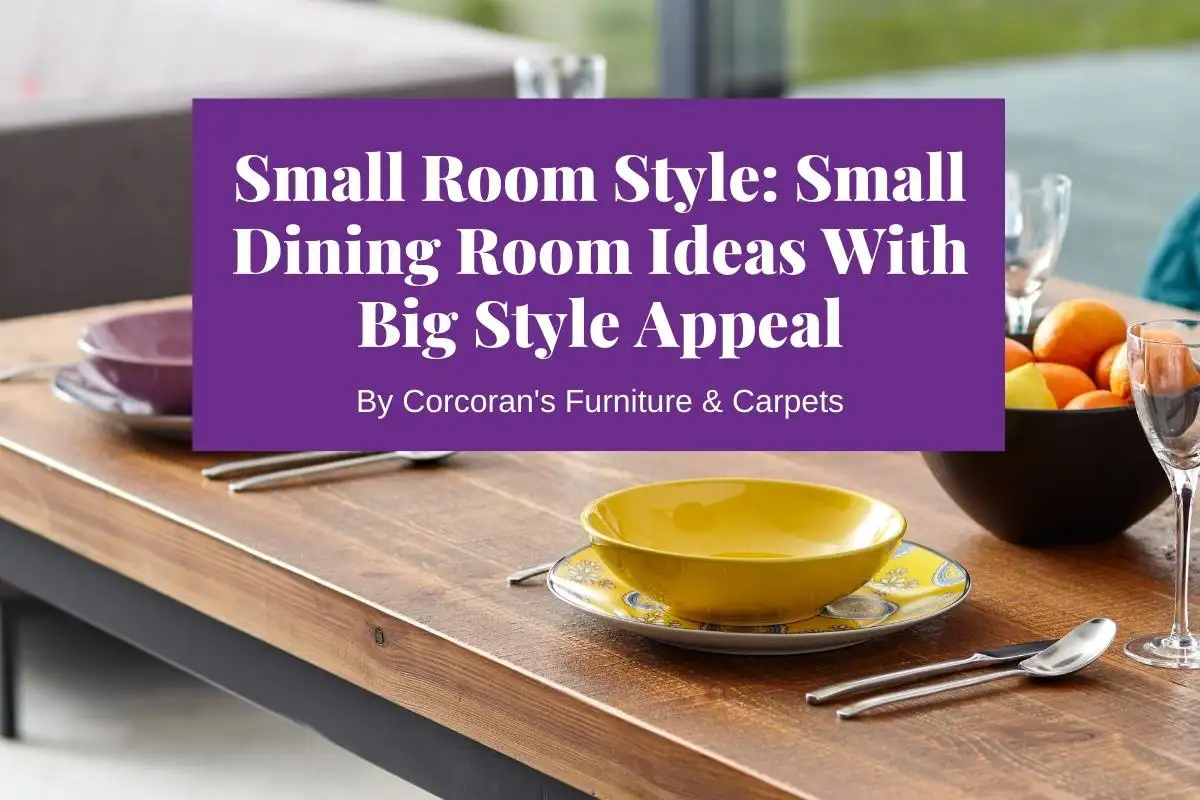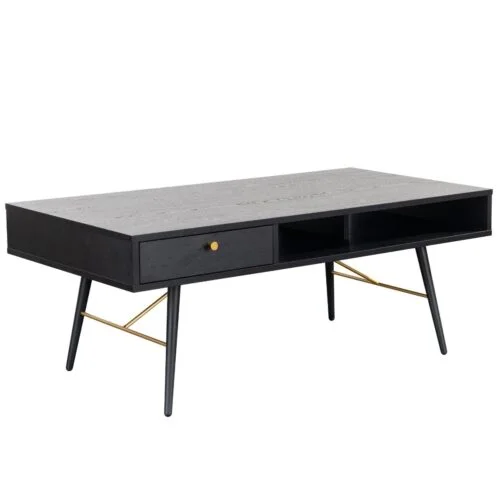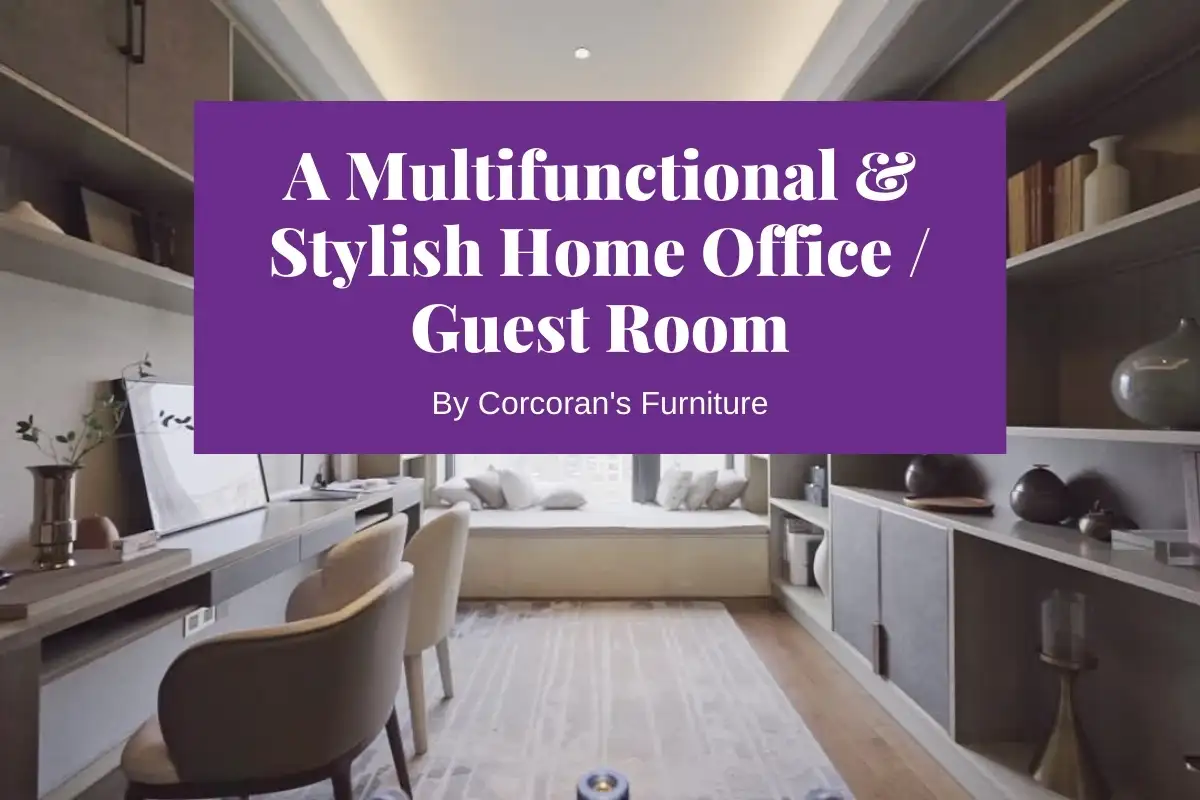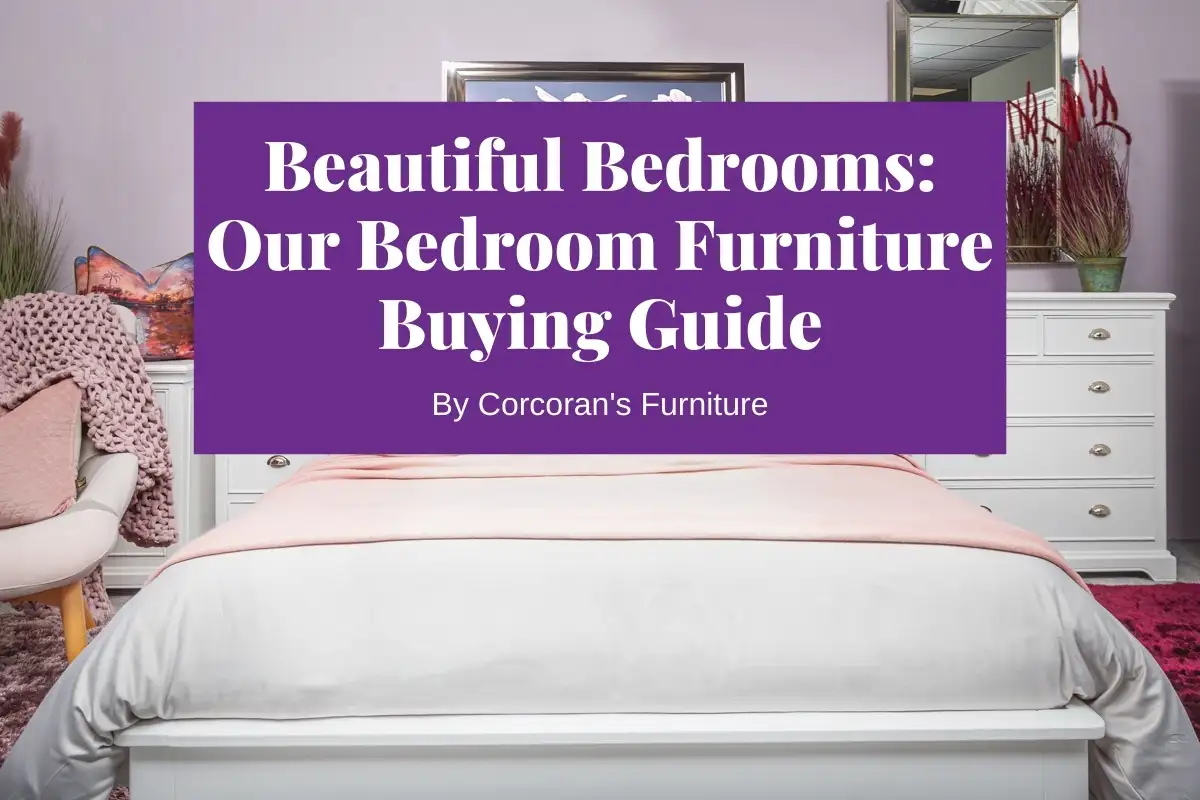Sofa Dimensions: How to Choose the Right Size Sofa to Perfectly Fit Your Space
With so many sofa styles, shapes, and sizes on the market, you will have plenty to choose from when it comes to selecting your dream one. However, it is important to consider the right size sofa for your space before splashing out on your favourite style.
The size of the sofa that you choose will have a huge impact on the look and feel of the room. A sofa that is too large may swamp the room, while a sofa that is too small may be lost in the space. You will also need to move about freely, so measuring the dimensions of the space available to you is key before going on the hunt for a sensational new sofa.
The function of your sofa is also something to consider; for example, is it for long, leisurely days spent lounging and socialising, or do you wish to present a more structured, upright, and formal look? Either way, the sofa size will set the tone of the room, so choose wisely when selecting this key piece of furniture for your home.
In this blog, we will discuss some useful tips and tricks to help you measure and scale your area, so that you can easily find the right sofa size to perfectly fit your space. For a more in depth guide on everything you need to know when it comes to buying a sofa, don’t miss out on our Ultimate Sofa Buying Guide here.
Measure your space for the right size sofa
When you’re just getting started on your sofa-buying journey, assessing roughly what size sofa you are looking for will help narrow the search. A great way to do this is to map out the shape of your preferred sofa in your room by using masking tape, or measuring tape or cut out the estimated shape of the sofa with newspaper, and once you are happy with how it looks, take note of the dimensions.

It is also important to consider the height and width of the room, as well as any features such as doors, windows, and fireplaces, as these will influence where the sofa will fit best. For example, be aware of how much distance you leave between the fireplace and your furniture. If you leave too much space you won’t feel the benefit of the heat, and if you are too close, it might be too uncomfortable to sit there. At least 2-3 feet is a good minimum distance.
In general, a sofa that fits two thirds along the span of your wall will work best lengthwise, as this will complement the space and allow you to showcase other design features in the room.
Traffic flow and function
Once you have mapped out a rough outline of your space and where you would like your sofa to be placed, this will give you a good indication of what the traffic flow will look like. In general, you should allow for a minimum of 30 inches (76 cm) of space around your sofa. Being able to move freely amongst your furniture is not only practical, but it also allows the energy of the room to flow more freely.
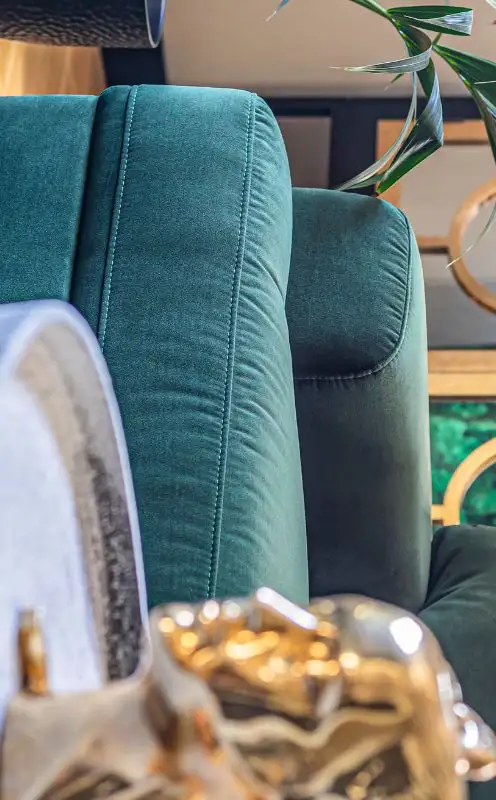
When choosing the ideal size sofa for your space, it is very important to consider what the space will primarily be used for. For example, if you have a larger family or if you like to host a lot of parties and social gatherings, then a larger sofa or a modular sofa with sections that can seat multiple people would be suitable. Alternatively, if you are working with a smaller room, then a neater sofa or a loveseat will work best.
Sofa sizes and dimensions
There are a huge variety of sofa sizes and dimensions to choose from when searching for the right size sofa to suit your space.
Below are the most popular sofa sizes on the market today and their corresponding dimensions:
- One seater sofa: The ever popular one seated armchair works well with a variety of sofas, and its typical measurements are 36” width x 38” depth x 34” height.
- Two seater sofa: The loveseat is designed for two people, often measuring 63” width x 38” depth x 24” height.
- Three seater sofa: The standard sofa is the most common sofa size, as it works in most living spaces. It’s approximately 90” width x 38” depth x 34” height.
- Four seater sofas: The chesterfield, chaise lounge, mid-century modern, and reclining sofas are all examples of fabulous four-seated sofas; they typically measure, 117” width x 38” depth x 34” height.
- Five seater sofas: Five-seater sofas are also known as sectional or modular sofas, come in a variety of styles, sizes, and materials, and they are ideal for larger families or groups. They typically measure 144” width x 38” depth x 34” height.
- Six seater sofas: Six-seater sofas come in multiple pieces and include L-shapes, U-shapes, modular, semi-circle, or square ‘pit sofas’ and typically measure, 171” width x 38” depth x 34” height.
Sofa shape
The sofa shape is also an important consideration when picking the right size sofa for your space. Here’s a handy tip: if the room has a low ceiling, opt for a sofa with a lower back to keep the design in proportion to the room’s height. A design with a low back can also create the illusion of extra space below standard ceiling heights.
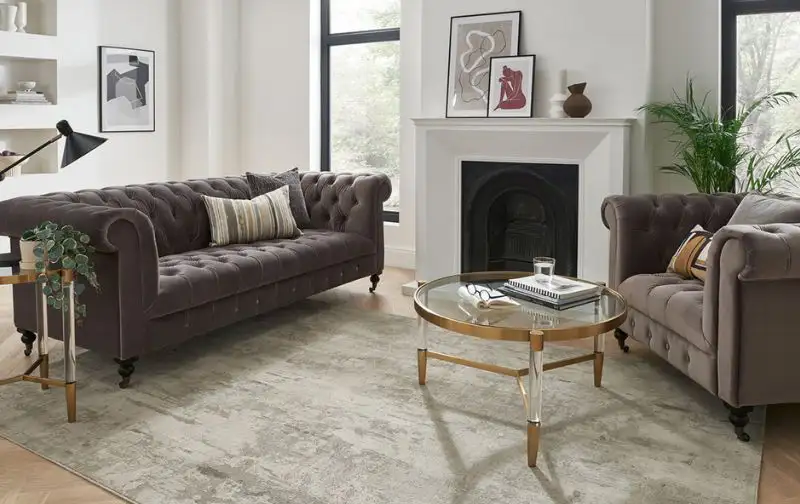
Larger spaces will permit larger sofa types, but a smaller space does not mean that you will be limited in your options.
Here are some of the most popular sofa shapes on the market today:
- L-shaped and corner sofas: L-shaped and corner sofas are perfect for larger rooms and to accommodate larger groups of people. They are an ideal way to provide a cosy seating option.
- U-shaped sofas: U-shaped sofas are a great option for those who like to entertain and for larger living areas.
- Chaise lounge: The classic chaise lounge is ideal for lounging on a lazy afternoon.
- Sofa bed: A sofa bed is perfect for smaller spaces; it can transform from a sofa to a bed in an instant and is both functional and fabulous.
- Modular and sectional sofas: Modular and sectional sofas are the ideal solution if you are looking to get creative with the layout of your room. They are perfect for larger numbers of people, and they will also work for smaller spaces, depending on the dimensions you choose.
- Ottomans: An ottoman, footstool, or pouffe is a great way to add an additional layer of comfort to your couch. They can serve as a footrest, a seat, or a perch for books.
- Loveseats: Loveseats are great for smaller spaces as they fit two people comfortably. They are ideal for smaller living rooms, studies, hallways, or as an accent feature in a larger room.
What you need to know when measuring a sofa
Here are the most important things you need to know when measuring a sofa:
- Don’t just measure frame length and width. The arms are usually the widest part of the sofa, so make sure you measure from arm to arm. This is especially true for sofas with curved arms.
- Depth is also very important, especially if you’re considering different sofa sizes. The depth on a two-seater is usually the same as on a three-seater, and so on, so a smaller sofa doesn’t mean that it’s less deep.
- If the sofa reclines, you also need to measure it at its full extension; there’s no point having a recliner if there’s no room to use it! Also keep in mind that if you have a recliner, you won’t be able to push the sofa flat against the wall, so measure with enough space to position it properly.
- If your sofa has screw-on legs, you may be able to remove them to give some extra space to get it into the room for installation, but if they are permanently connected, then make sure you measure the sofa height all the way down to the feet.
- Ensure you have space for any accompanying accessories, like an ottoman or footrest. Similarly, if you buy sofas that fold out into beds, make sure that there will be room to open it up. You may be happy to move your coffee table every time you want to use the sofa bed as a bed, but you still need a space to which you can move the table.
- You can measure your room in the same way you did before, now that you have the actual dimensions of your sofa, either with masking tape or string to make a blueprint of your sofa’s size and shape, or simply with a measuring tape. However, if you are using a flat blueprint, don’t forget things like window height (if you plan to have your sofa against a wall), or doors that open towards your sofa.
- Consider the spots the sofa will have to pass through to reach the room, like doorways, narrow hallways, staircase bannisters, and sharp corners.
Your sofa will provide one of the most used perches in your home. And while choosing the right size sofa to perfectly fit your space might seem like a daunting task, with just a little bit of preparation and consideration, we promise it can actually be a fun and exciting process.
By measuring your room, thinking about the size and shape of the sofa you need, and paying attention to the logistics of bringing it in through areas such as your hallways or stairs, you can ensure that your sofa fits your space like a glove.
And when your sofa fits perfectly, it not only looks sensational, but it also adds a level of comfort and cosiness to your home that you’ll enjoy for years to come. So go ahead, armed with our helpful tips, let your creativity thrive as you source the right size sofa for your space.
Why wait? Dive into a stylish world of comfort with our extensive collection of sofas now. With a wide range of styles and designs to choose from, your dream sofa is just a few clicks away. Experience the joy of finding that perfect piece that adds comfort, style, and a touch of cosiness to your home today.
Nicola O’Sullivan holds the position of PR Manager and Interior Design Writer at Corcoran’s Furniture, where she applies her sharp eye for interior design. She is in the process of earning a diploma from the globally recognised Interior Design Institute, further enhancing her expertise in the field.




